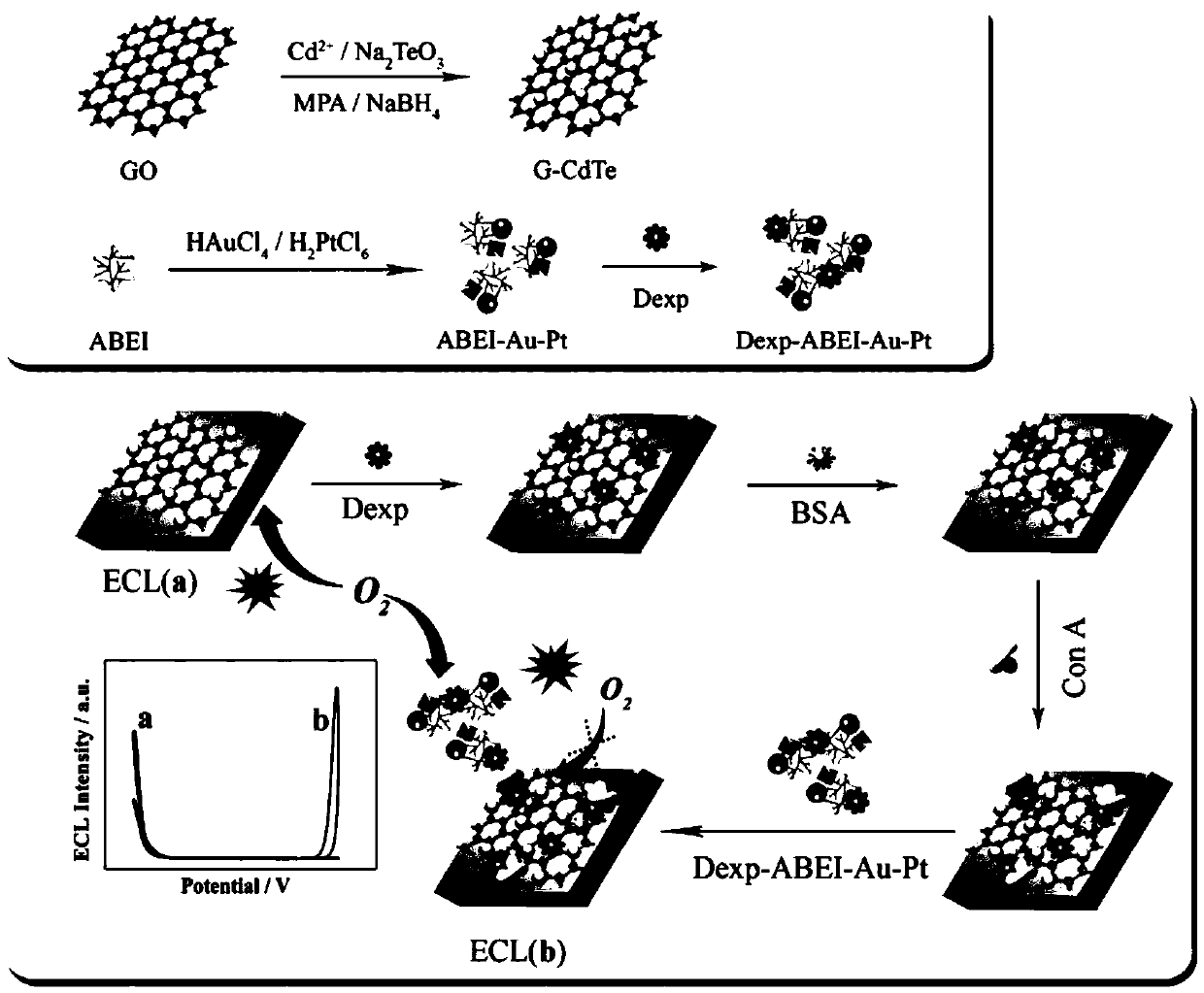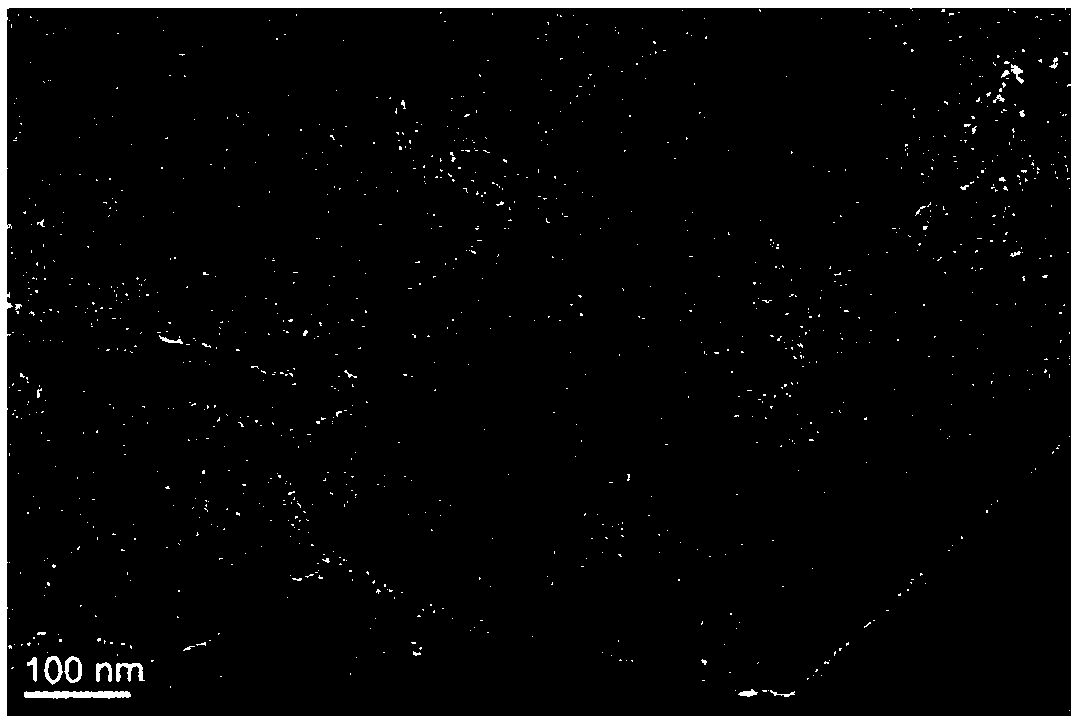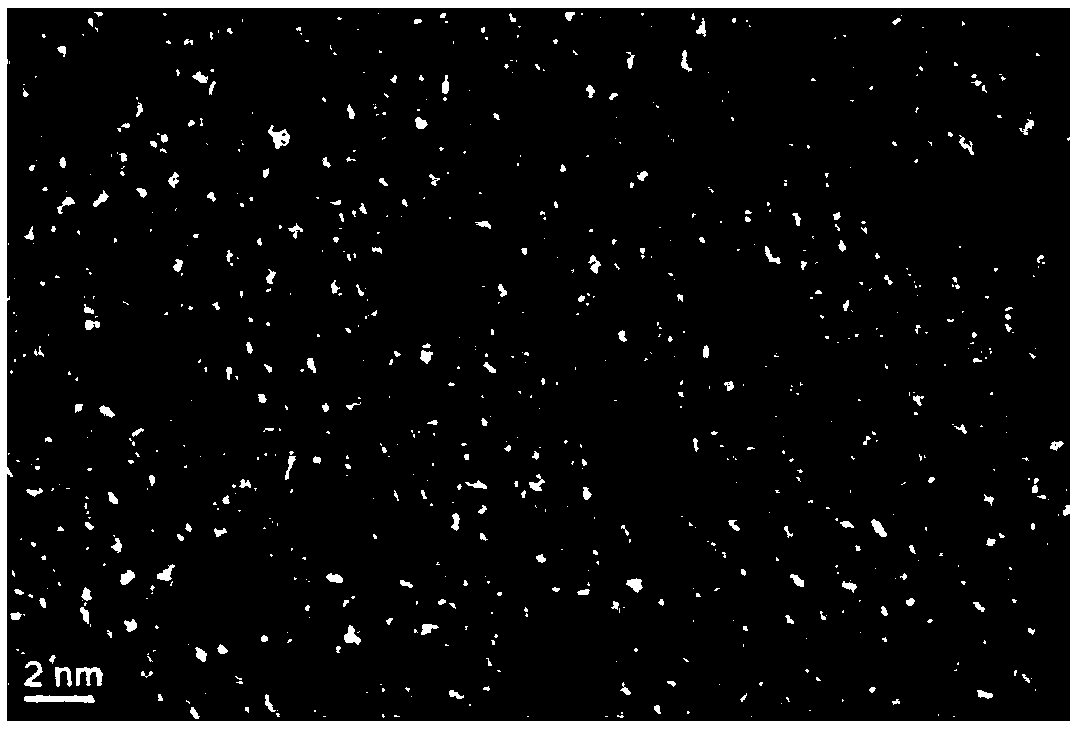Sensor for detecting bean protein A and preparation method and application thereof
A technology of concanavalin and sensors, applied in instruments, measuring devices, scientific instruments, etc., can solve problems such as result distortion, and achieve the effects of convenient detection, strong operability, and simple process
- Summary
- Abstract
- Description
- Claims
- Application Information
AI Technical Summary
Problems solved by technology
Method used
Image
Examples
preparation example Construction
[0090] The present invention also provides a method for preparing the sensor for detecting concanavalin A, comprising the following steps:
[0091] The G-CdTe QDs are combined with the recognition unit through π-π stacking, and are modified on the surface of the pretreated electrode; the anode luminescent body combined with the recognition unit is then modified and incubated to obtain the sensor.
[0092] In a preferred embodiment of the present invention, the G-CdTe QDs are dispersed in water, and the dispersion concentration is 0.5-2.0 mg / mL.
[0093]In a preferred embodiment of the present invention, the identification unit includes Dexp. Preferably, the concentration of Dexp is 5-30 mg / mL. More preferably, the Dexp is made into an aqueous solution of Dexp.
[0094] In a preferred embodiment of the present invention, the volume ratio of the G-CdTe QDs dispersion to the Dexp solution is 1:(0.8-1.2), preferably 1:1.
[0095] In a preferred embodiment of the present inventi...
Embodiment 1
[0138] This embodiment provides a method for preparing a sensor for detecting concanavalin A, the steps are as follows:
[0139] 1. Preparation of G-CdTe QDs
[0140] Weigh 36.89mg of CdCl 2 2.5H 2 O was dissolved in 50 mL of deionized water, and 220 μL of 1 mg / mL GO was added to the above solution under stirring conditions and continued to stir for 1 h. Then gradually add 1 mL of 0.01 M Na 2 TeO 3 , 50mg of C 6 h 5 Na 3 o 7 2H 2 O, 33 μL of MPA and 100 mg of NaBH4 And continue to stir, after heating and reflux at 130°C for 10h, wash and centrifuge three times with ethanol and distilled water with a volume ratio of 1:1 to collect G-CdTe QDs, disperse in deionized water and store at 4°C for later use. 1 mg / mL.
[0141] 2. Preparation of anode emitter Dexp-ABEI-Au-Pt
[0142] 1 mL of 1% HAuCl 4 The solution was added dropwise to 2 mL of 10 mmol / L ABEI solution under stirring condition, and stirred and reacted at room temperature for 2 h. Then 1 mL of 1% H 2 PtCl 6...
Embodiment 2
[0147] This embodiment provides a method for preparing a sensor for detecting concanavalin A, the steps are as follows:
[0148] 1. Preparation of G-CdTe QDs
[0149] Same as Example 1
[0150] 2. Preparation of anode emitter Dexp-ABEI-Au-Pt
[0151] 1 mL of 1% HAuCl 4 The solution was added dropwise to 2 mL of 10 mmol / L ABEI solution under stirring condition, and stirred and reacted at room temperature for 2 h. Then 1 mL of 1% H 2 PtCl 6 The solution was added dropwise to the above mixed solution with stirring and continued to stir for 2h. Then the above mixed solution was centrifuged at 10000rpm for 15min, and washed three times with deionized water, and the obtained anode emitter ABEI-Au-Pt was dispersed into double distilled water, the dispersion concentration was 1.5mg / mL, and 1mL was added, and the concentration It was a 15 mg / mL Dexp solution, stirred for 2 hours to obtain the anode emitter Dexp-ABEI-Au-Pt combined with the recognition unit, and stored at 4°C for ...
PUM
| Property | Measurement | Unit |
|---|---|---|
| concentration | aaaaa | aaaaa |
| size | aaaaa | aaaaa |
| quality score | aaaaa | aaaaa |
Abstract
Description
Claims
Application Information
 Login to View More
Login to View More - R&D
- Intellectual Property
- Life Sciences
- Materials
- Tech Scout
- Unparalleled Data Quality
- Higher Quality Content
- 60% Fewer Hallucinations
Browse by: Latest US Patents, China's latest patents, Technical Efficacy Thesaurus, Application Domain, Technology Topic, Popular Technical Reports.
© 2025 PatSnap. All rights reserved.Legal|Privacy policy|Modern Slavery Act Transparency Statement|Sitemap|About US| Contact US: help@patsnap.com



